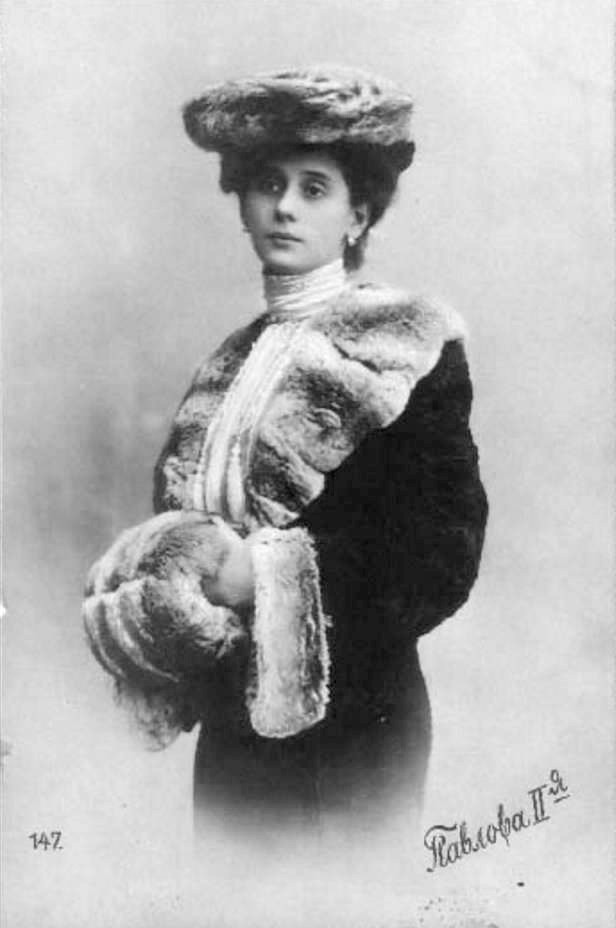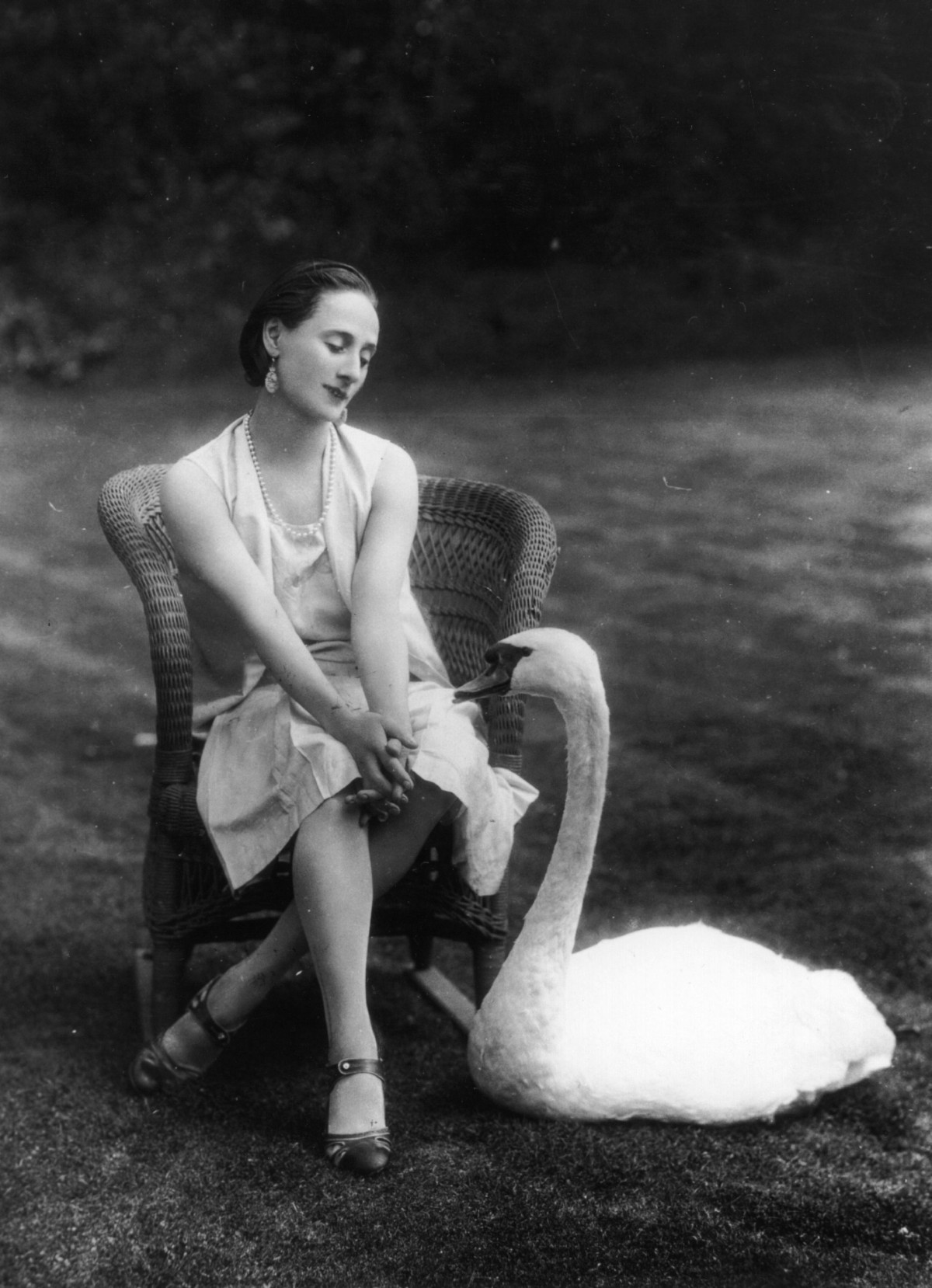Anna Pavlovna (Matveyevna) Pavlova remains an icon in the world of ballet, celebrated as one of history’s most illustrious and influential ballerinas. Born in Saint Petersburg on February 12th [O.S. January 31st] 1881, her journey into dance began with a transformative childhood experience. A performance of The Sleeping Beauty in 1890 ignited a fervent dream within young Anna – to become a ballerina, a destiny she would relentlessly pursue.
Pavlova’s formal training commenced at the age of ten when she was accepted into the prestigious Imperial Ballet School. Despite facing early adversity, including cruel taunts from classmates who mocked her slender physique with nicknames like “the broom” and “la petite sauvage,” her spirit remained unbroken. Under the tutelage of esteemed instructors such as Christian Johansson, Pavel Gerdt, and Enrico Cecchetti, culminating in Ekaterina Vazem’s classe de perfection in 1898, Pavlova honed her technique with unwavering dedication. By her graduation in 1899, it was evident to her mentors and critics alike that Pavlova embodied a unique style reminiscent of the Romantic ballerinas of the 1840s, setting her apart as a distinct talent.
 Anna Pavlova (ca. 1905)
Anna Pavlova (ca. 1905)
Marius Petipa, the legendary ballet master, recognized Pavlova’s exceptional potential early on. Even as a student, her dancing captivated him. He cast the ten-year-old Pavlova in his ballet A Fairy Tale, created for the Imperial Ballet School, and later entrusted her with a leading role in The Two Stars for her graduation performance. Petipa became a mentor to the young ballerina, and upon her graduation in 1899, Pavlova remarkably bypassed the corps de ballet and joined the Imperial Ballet as a coryphée. Her very first season signaled the dawn of a remarkable career.
One of Pavlova’s initial roles with the Imperial Ballet was the Fairy Candide in The Sleeping Beauty. However, her debut performance was fraught with anxiety. The eighteen-year-old ballerina, insecure about her technical prowess, panicked about performing the variation. In a moment of backstage improvisation, fellow fairies Lyubov Egorova and Marie Petipa quickly choreographed new steps to ease her nerves, which she performed. Despite this impromptu change, Petipa, during an interval, firmly instructed Pavlova to adhere strictly to his choreography in the future. Interestingly, Pavlova was reportedly never cast as the Fairy Candide again.
Another early role of note was Zulma, an attendant to the Queen of the Wilis in Giselle. In February 1900, she originated the role of Frost in The Seasons, and in April, debuted as Eos in The Awakening of Flora. This latter ballet became significant as it marked her first principal role in the same year. During the 1900-01 season, Petipa elevated her to the leading role of Flora after Lyubov Petipa’s sudden retirement. The young Pavlova faced considerable pressure, grappling with the technical demands of a role previously embodied by the virtuoso Matilda Kschessinskaya. Nevertheless, on September 23rd [O.S. 10th September] 1900, the nineteen-year-old Pavlova’s debut as Flora was a resounding triumph. Critic Bezobrazov lauded her as “light and graceful,” and the role of the Goddess of the Flowers became a cherished part of her repertoire.
 Anna Pavlova as Nikiya (1902)
Anna Pavlova as Nikiya (1902)
The subsequent season saw Pavlova expand her repertoire with roles such as Princess Florine in The Sleeping Beauty, Anne and Venus in Bluebeard, the Pas de trois in Paquita, Gulnare in Le Corsaire, and Henriette in Raymonda. Her true breakthrough arrived in 1902 when she was cast as Nikiya in La Bayadère. Eugenia Sokolova coached Pavlova for the role of the temple dancer, and her debut in April 1902 was met with phenomenal success. Audiences were spellbound by the ethereal and delicate ballerina, and Anna Pavlova ascended to stardom. Following this triumph, Pavlova’s repertoire expanded further, encompassing leading roles that showcased her dramatic talents, many of which were refined under Petipa’s guidance, even after his forced retirement. Between 1902 and 1906, she debuted in roles like Queen Nisia, Paquita, and Princess Aspicia. In 1903, she debuted as Giselle and Ondine in Petipa’s final revival of Giselle and Alexander Shiryaev’s revival of The Naiad and the Fisherman, both staged specifically for her.
 Anna Pavlova as Princess Aspicia (1906)
Anna Pavlova as Princess Aspicia (1906)
Anna Pavlova achieved the esteemed rank of Prima Ballerina in 1906. Two years prior, in 1904, she ventured outside Russia for the first time, dancing the title role in Giselle in Warsaw. From 1908 onwards, her performances extended further internationally as she toured the West with a company of Imperial Ballet colleagues, including Nikolai Legat and Shiryaev. In 1909, Pavlova joined Sergei Diaghilev’s Ballets Russes, taking on leading roles in several ballets by Mikhail Fokine, including Le Pavillon d’Armide, Egyptian Nights, and Les Sylphides. However, disagreements with Diaghilev’s direction led to her departure from the Ballets Russes in 1910. Subsequently, she established her own company, embarking on global tours. She would later return to dance with the Ballets Russes as a guest ballerina and made her final appearance with the Imperial Ballet in 1913.
 Anna Pavlova in Les Sylphides (1909)
Anna Pavlova in Les Sylphides (1909)
For her own company, Pavlova curated a repertoire that included abridged versions of her beloved ballets and excerpts, such as Giselle, The Magic Flute, La Fille mal gardée, The Awakening of Flora, The Fairy Doll, and Chopiniana (Les Sylphides). She also commissioned new, shorter ballets inspired by scenes from full-length works, like Snowflakes, derived from The Nutcracker‘s snow scene. It was for her company that her iconic solo dances, choreographed by Ivan Clustine, were created, including The Dragonfly, The California Poppy, and Invitation to the Valse. Yet, the most enduring and widely performed piece in Pavlova’s repertoire, her signature ballet, was The Swan (now known as The Dying Swan), created for her by Mikhail Fokine in 1905.
 Anna Pavlova as the Dying Swan (1907)
Anna Pavlova as the Dying Swan (1907)
After leaving Russia, Pavlova made London her permanent home, purchasing Ivy House in Golders Green, North-west London, in 1912. Following successful tours of Britain and the United States from 1910 to 1914, and her farewell to the Imperial Ballet, she embarked on an ambitious and relentless touring schedule that would define the rest of her life. With her company, she traversed the globe, introducing ballet to audiences in Mexico, South America, India, China, Japan, and Australia, among many other places previously untouched by the art form.
 Anna Pavlova in the garden of Ivy House with her favourite pet swan, Jack
Anna Pavlova in the garden of Ivy House with her favourite pet swan, Jack
Two decades of global touring brought Pavlova immense fame and recognition, solidifying her profound contribution to ballet. However, the demanding schedule took a heavy toll. In 1931, while touring the Netherlands, Pavlova contracted pneumonia on a train journey. She was taken to the Hotel Des Indes in The Hague, and upon learning of her illness, the Queen of the Netherlands dispatched her personal physician. Tragically, Pavlova’s condition was too advanced, developing into pleurisy.
Anna Pavlova passed away on January 23rd, 1931, at the age of 49, just three weeks before her 50th birthday. According to her common-law husband, Victor Dandré, her poignant last words were, “Get my Swan costume ready.” She was cremated, and her ashes are interred at Golders Green Crematorium.
 Anna Pavlova's urn at Golders Green Crematorium (2015)
Anna Pavlova's urn at Golders Green Crematorium (2015)
Did you know?
- Pavlova held strong opinions on ballet music, famously disliking Igor Stravinsky’s compositions. Her aversion to Stravinsky’s avant-garde score was a contributing factor to her departure from the Ballets Russes in 1910, as she refused to dance the lead in Fokine’s The Firebird.
- Pavlova was a devoted animal lover and kept numerous pets, including swans named Jack and Clara.
- Pavlova profoundly inspired Sir Frederick Ashton. The “Fred step,” a recurring sequence in many of his ballets – ‘arabesque, fondu, coupé, petit developpé, pas de bourée, pas de chat’ – was adapted from Pavlova’s technique. Ashton acknowledged this “Pavlova” step as his choreographic signature. Sir Robert Helpmann famously stated, “every ballerina role that Ashton created could’ve been danced by Anna Pavlova,” highlighting her enduring influence.
Anna Pavlova’s Imperial Ballet repertoire
- The Fairy Candide in The Sleeping Beauty (**1899)
- Zulma in Giselle (**1899)
- Aurora, the Goddess of the Dawn in The Awakening of Flora (**1900)
- Frost in The Seasons (1900)
- Diana, the Goddess of the Hunt in Le Roi Candaule (**1900)
- Flora, the Goddess of the Spring in The Awakening of Flora (**1900)
- The Third Solo Shade in La Bayadère (1900)
- Anne in Bluebeard (**1901)
- Venus in Bluebeard (**1901)
- Gulnare in Le Corsaire (**1901)
- Princess Florine in The Sleeping Beauty (**1901)
- Henrietta in Raymonda (**1901)
- Lise in The Magic Flute (**1902)
- Nikiya in La Bayadère (**1902)
- Queen Nisia in Le Roi Candaule (**1903)
- The Spanish Doll in The Fairy Doll (1903)
- The Princess’s Retinue in The Magic Mirror (1903)
- Giselle in Giselle (*1903)
- Ondine in The Naiad and the Fisherman (*1903)
- Paquita in Paquita (**1904)
- Medora in Le Corsaire (**1904)
- Kitri/Dulcinea in Don Quixote (**1905)
- Princess Aspicia in The Pharaoh’s Daughter (**1905)
- Swanhilda in Coppélia
- Lise in La Fille mal gardée
- Colombine in Harlequinade
- The Lilac Fairy in The Sleeping Beauty (**1907)
- Madeleine in Le Pavillon d’Armide (1907)
- Bacchante in The Seasons (*1907)
(* – original cast member of role in revival) (** – year of début performance in role)
Sources
- Money, Keith (1982) Anna Pavlova: Her Life and Art. UK: Alfred A. Knopf
- Pritchard, Jane with Hamilton, Caroline (2012) Anna Pavlova: Twentieth-Century Ballerina. London, UK: Booth-Clibborn Editions
Photos and images: © Dansmuseet, Stockholm © Большой театр России © Victoria and Albert Museum, London © Государственный академический Мариинский театр © CNCS/Pascal François © Bibliothèque nationale de France © Musée l’Opéra © Colette Masson/Roger-Viollet © АРБ имени А. Я. Вагановой © Михаил Логвинов © Михайловский театр, фотограф Стас Левшин. Партнёры проекта: СПбГБУК «Санкт-Петербургская государственная Театральная библиотека». ФГБОУВО «Академия русского балета имени А. Я. Вагановой» СПбГБУК «Михайловский театр». Михаил Логвинов, фотограф. Martine Kahane.
Share this:
Like Loading…
